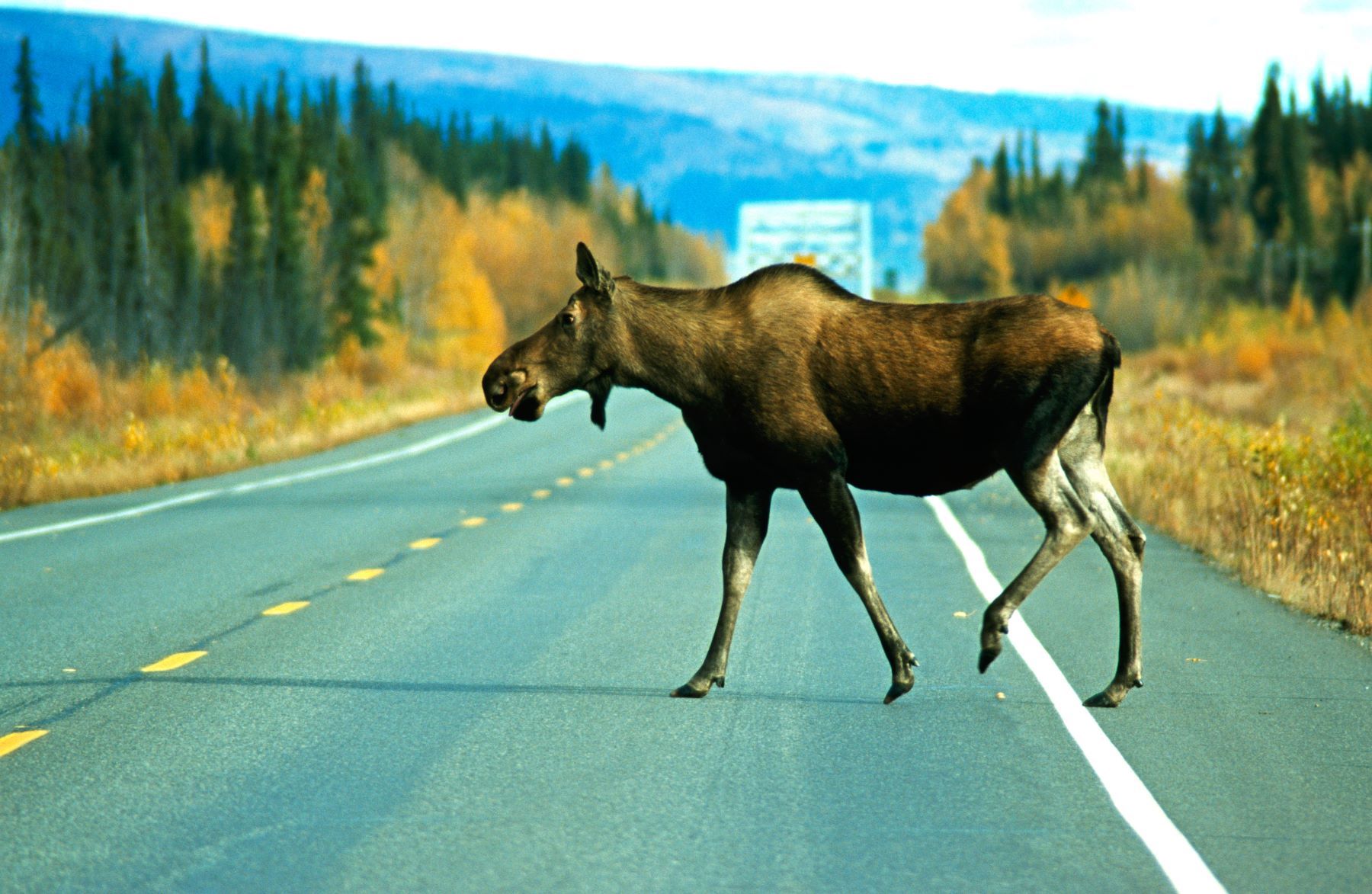North to Alaska - Wildlife Crossings
An abundance of wildlife is one thing that Alberta, British Columbia, the Yukon, and Alaska all have in common. Whether you’re looking for bears, moose, elk, fox, bighorn sheep, lynx, bald eagles or other animals, the drive north is filled with opportunities — oftentimes right outside your vehicle’s window!

Be sure to take the Inside Passage route and the ferry if you’re searching for marine wildlife, such as humpback whales, orca, sea lions, sea otters, and more. Or drive along the Rockies or Gold Rush routes if you’re seeking land animals often found up in the mountains. There are some areas known for specific types of wildlife, so research the different stops you’ll want to make along the route. Visit animal conservation centers if you want to guarantee wildlife sightings and up-close encounters. Or book a wildlife viewing tour to learn more about the different animals and their habitats from the experts.

No matter where you are, it’s important to approach wildlife viewing in an ethical and mindful manner and show respect to the animals in their natural habitats. Here are some safety tips and reminders when viewing wildlife during your travels:
- When driving, be sure to stop only when it is safe to do so for cars that are traveling behind you, and look at the animals from the safety of your car.
- Be sure to pull your vehicle onto the shoulder and park safely on the side of the road. Do not stop at or near hill crests, corners, or sharp curves and intersections. Use roadside pull-offs and parking areas to help avoid traffic congestion around wildlife.
- Do not crowd or follow any of the animals.
- If traveling with your pet, be sure they are leashed at all times.
- Never bait animals to come closer to your vehicle with food or sounds. Not only is it dangerous, but it’s also illegal.
- If you do decide to leave your vehicle, watch for changes in an animal's behavior. If the animal you are watching stops eating, becomes alert, or moves away, you are too close and should back off and head back to your vehicle.
- Be bear aware. Carrying and knowing how to use bear spray, making noise and hiking with groups will all reduce your odds of a negative bear encounter. Watch this video for more tips.
- Please be sure to slow down when you spot wildlife along the side of the road. If you’re traveling on roads with speeds that exceed 35 mph, it’s best not to stop as spooked animals may unintentionally cross the road and possibly be struck by a vehicle.
- For those looking to capture that perfect Instagram shot, please remember to do so at a safe distance. Only take photos from a car or designated viewing area.
- The experts at Travel Alberta warn: always remember that wildlife is wild. Never attempt to feed or pose with any of the animals as not only is it dangerous for you, but could also lead to human/animal confrontations in the future and the possible destruction of the animal.
- If you do decide to get out of our vehicle, remember to keep at least three bus lengths (30 meters/100 feet) away from large animals and keep three times that distance (100 meters/325 feet) away from bears.
- Use viewing guides and equipment. Make use of binoculars and spotting scopes to get a close-up look. Bring field identification guides to help you identify what you see.
- Be aware of the important connections between wildlife and the Indigenous people who live in these regions. These videos on bear viewing and whale watching in British Columbia explain how Indigenous nations approach responsible wildlife viewing and their philosophies.

Whichever road your travel plans take you along, there are countless opportunities for wildlife viewing during your journey. However, it is crucial to understand the best way to approach these encounters with care and respect for the safety of the animals and their habitats as well as yourself.
Read up on the ways to witness British Columbia’s wildlife here. Want to spot Alaska’s Big Five? Learn more here. Discover the Yukon’s top wildlife viewing tips here. Find a wildlife viewing tour in Alberta here. And learn even more about wildlife in each region, visit Travel Alberta, Hello BC, Travel Alaska, and Travel Yukon.

